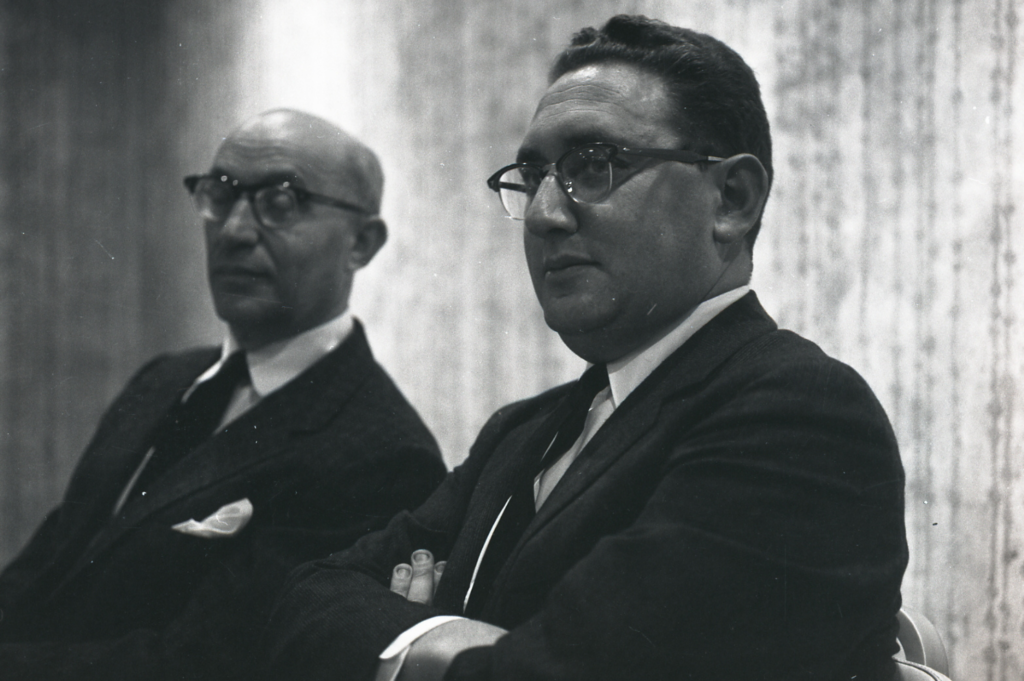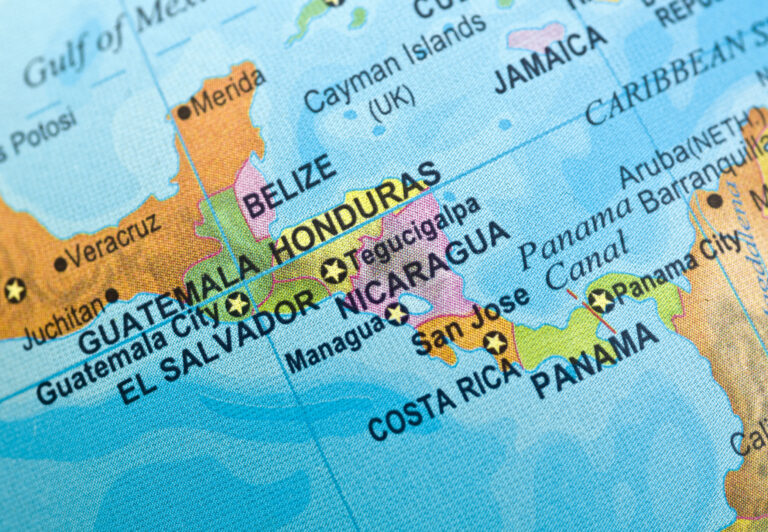There are many things to criticize about Henry Kissinger’s career. Leftists point to the bombing of Cambodia during the Vietnam War, American complicity in the coup in Chile that brought down the Communist regime of Salvador Allende, and his interference in Iranian politics.
Conservatives, on the other hand, underscore his betrayal of the South Vietnamese and the abandonment of democratic Taiwan. They add that calling Kissinger a scholar statesman, as some do, makes no sense given his decades-long service to Communist China as a paid lobbyist/apologist for the regime.
But I would lay an additional charge against the one-time American diplomat.
It was Henry Kissinger, as Nixon’s National Security Advisor, who oversaw the production of an infamous memo that turned population control into a weapon in the Cold War. Even today, his argument that America’s national security depends upon waging war on people continues to be used to justify the promotion of abortion, sterilization and contraception around the world.
National Security Study Memorandum 200 (NSSM 200), as the memo was called, was more commonly known as “The Kissinger Report” after its author. The 250-page report, a joint effort of the NSA, CIA, State, and Pentagon was kept secret—for good reason—until it was finally declassified in 1989.
Believing that people mean power, and worried about the demographic decline of the West, these practitioners of realpolitik unapologetically sought to engineer a fertility decline among more prolific peoples. And they were fully prepared to deceive and strongarm other countries into doing so.
The Kissinger Report warned that, “If present fertility rates were to remain constant, the 1974 population of 3.9 billion would increase to 7.8 billion by the year 2000 and rise to a theoretical 103 billion by 2075.” [italics added] Having conjured up this impossible flood of humanity, what consequences did these “secret” agencies foresee for America?
The report argued that rapid population growth is a security threat because it would lead to competition for the raw materials needed for the U.S. economy, and provide opportunities for the Soviet Union and China to promote communist revolutions and recruit client states.
Thus was population control declared to be a weapon in the Cold War. The immediate result was a huge jump in population control spending by the U.S. and its allies. Dozens of countries around the world were identified as targets, especially those which were considered to be vulnerable to communist insurrection, such as Thailand and the Philippines, and those sitting on top of valuable metals, including the nations comprising the southern tier of Africa.
Population control, by preserving our access to strategic raw materials and slowing the spread of communism, would eliminate future threats to U.S. national security. In this way it would preserve America’s global advantage in arms, wealth, and all-around geopolitical muscle.
Most Americans think of their country as a force for good in the world. The Kissinger Report has the U.S. doing the opposite, promoting violence, weakening democracy, and hindering the economic growth of competitors. Instead of promoting freedom it encourages governments to intervene, even violently, in the most private decisions of families. Instead of encouraging democracy, it imposes population control on sovereign nations. Instead of promoting open economies it hobbles economic growth by reducing human numbers.
Darkness always hates the light. It is not surprising that the originators of this report not only wanted it kept secret, but also wanted it carried out by surrogates like the U.N. Population Fund and the World Bank. The involvement of such “multilateral” agencies, the study reasoned, would help to conceal the U.S. role and purpose in implementing such programs. “It is vital that the effort to develop and strengthen a commitment on the part of the LDC [less-developed countries] leaders not be seen by them as an industrialized country policy to keep their strength down or to reserve resources for us by the ‘rich’ countries.”
The “key countries” targeted by NSSM 200 for population control were those likely to grow into regional powers, those rich in natural resources, or both. Brazil, which “clearly dominates” Latin America in demographic significance, has the potential to exert its influence far beyond its borders. Its expanding population suggests a “growing power status for Brazil in Latin America and on the world scene over the next 25 years.”31 In Africa Nigeria was singled out: “Already the most populous country on the continent, with an estimated 55 million people in 1970, Nigeria’s population by the end of this century is projected to number 135 million.32 This suggests a growing political and strategic role for Nigeria, at least in Africa south of the Sahara.”33
Henry Kissinger had his way. The Kissinger Report was formally adopted as U.S. foreign policy by National Security Decision Memorandum 314 (NSDM 314), which was signed on 26 November 1975 by Kissinger’s successor as National Security Advisor, Brent Scowcroft, on behalf of President Gerald Ford.
The war on people was off and running. A follow-up report, issued in 1976 by the Interagency Task Force on Population Policy for the Under Secretaries Committee of the NSC, asks—and suggests answer to—some disturbing questions:
- Would food be considered an instrument of national power? (Yes.)
- On what basis should such food resources then be provided? (Only to countries with population control programs in place.)
- Will we be forced to make choices as to whom we can reasonably assist, and if so, should population efforts be a criterion for such assistance? (Yes.)
- Are mandatory population control measures appropriate for the U.S. and/or others? (Maybe.)
- Is the U.S. prepared to accept food rationing to help people who can’t/won’t control their population growth? (No.)
The 1976 report also virtually endorsed strong-arm tactics to carry out population control programs:
Population programs have been particularly successful where leaders have made their positions clear, unequivocal and public, while maintaining discipline down the line from national to village levels, marshaling government workers (including police and military), doctors and motivators to see that population policies are well administered and executed. . . In some cases, strong direction has involved incentives such as payment to acceptors for sterilization, or disincentives such as giving low priorities in the allocation of housing and schooling to those with larger families. Such direction is the sine qua non of an effective program.35
The NSC report might have been describing the enforcement mechanism of China’s soon-to-be announced one-child policy, which for decades relied upon a “well-administered and executed” program of forced abortion, forced sterilization, and forced contraception to eliminate excess births.
At the time, India was in the midst of its infamous sterilization campaign, in which 6.5 million men were vasectomized. The NSC report, while secretly commending India’s program, strongly cautioned against public praise. “We recommend that U.S. officials refrain from public comment on forced-pace measures such as those currently under active consideration (!) in India . . . [because that] might have an unfavorable impact on existing voluntary programs.”38
The 1976 report also recommended ways to silence the rising chorus of developing world criticism directed at the new U.S. foreign policy. To answer the charges of cultural imperialism, locals were to be hired to flak the new population programs. To avoid the appearance of neo-colonialism, U.S. population control funding was to be routed through international organizations like the UNFPA, as was done in China, or to private groups like the IPPF and Family Health International. And, first and foremost, U.S. officials were never to use phrases like population control or birth control.
The report cynically advised U.S. officials to pretend a complete lack of interest in anything resembling population control: “[A]void the language of ‘birth control’ in favor of ‘family planning’ or ‘responsible parenthood,’ with the emphasis being placed on child spacing in the interests of the health of child and mother. . . . “
The programs themselves were also to be repackaged. To disarm critics in the developing world, population control programs were to be represented as “reproductive health care,” “maternal health care,” and even “child survival” programs. As one USAID-funded group advised at the time, population projects that “focus too narrowly on family planning as a solution” raise suspicions among host country officials. The solution they went on to propose is still in use today: Population projects were to be “Integrate[d] …with maternal and child health care delivery.”
Both the tactics and the rationalization for population control laid out in the Kissinger Report and its follow-ons continue in use today. For over 50 years the population controllers have carried out a gigantic, costly, and inhumane program to reduce human numbers. They have abused women, targeted racial and religious minorities, undermined primary health care, and aborted countless babies. They even embraced the most brutal birth control campaign in human history: China’s infamous one-child policy.
And one of the chief godfathers of the war on people was none other than the late Henry Kissinger.
******
Steven W. Mosher is the President of the Population Research Institute and the author of The Devil and Communist China (forthcoming, TAN books) and many other books available here.











